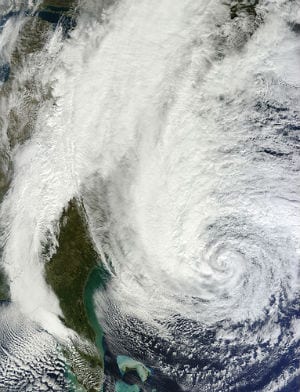 For now, people along the Eastern Seaboard are hunkering down and hoping to ride out the worst of Superstorm Sandy. But as soon as the surgewaters recede and people are able to take stock of the damage to their homes and property, it’ll be time for a whole hoard of field service personnel to roll their sleeves up and get to work.
For now, people along the Eastern Seaboard are hunkering down and hoping to ride out the worst of Superstorm Sandy. But as soon as the surgewaters recede and people are able to take stock of the damage to their homes and property, it’ll be time for a whole hoard of field service personnel to roll their sleeves up and get to work.
What do they do and how do they get it done? Here’s a look at how modern field service tackles disaster cleanup:
The Job Starts When the Storm’s Over
Blackmon Mooring, a 1,000-person nationwide disaster relief company, dispatches a roving team of 50-or-so technicians to set up shop just outside a disaster zone to set up a base camp. They send a few leaders in to assess the damage and touch base with clients, and then call for the calvary. “Once the storm’s over, that’s when our job starts,” said Jen Anderson, a company spokeswoman. “They pull in the trucks, and start the cleanup.”
Using Tech to Improve Disaster Response
Because Phillips & Jordan, a nationwide contractor specializing in emergency response and recovery services, gets paid by FEMA and the Army Corps of Engineers per cubic yards of debris, it became incredibly important following the devastating tornado that slammed Joplin, Mo. to have an accurate way to track and manage the work. By using rugged tablets and barcode-scanning technology, the company was able to ditch the inefficient paper-ticket invoicing.
Damage Assessment
The monetary devastation of Sandy is expected to be enormous — between $30 and $50 billion, according to some experts — and the biggest economic impact is likely to come from property damage. That means a lot of work for insurance adjusters and mortgage field service firms to both assess and maintain damaged or vacant buildings.
Super-Rugged Communications
Working in a dangerous environment without reliable power or cellular reception may require a different set of tools to stay safe and in touch — like the Sonim Technologies XP3 Sentinel — “part phone, part distress beacon.”
HVAC to the Rescue
Hurricanes and tornadoes aren’t the only act-of-God weather emergencies that send field service operations into a frenzy: Heat waves like the one that scorched the Midwest over the summer require their own planning, too. “You know it’s coming. There’s no way to avoid it,” said Jim Horlander, owner of Heartland Quality Heating & Cooling. “You mentally prepare yourself, kiss your wife goodbye, and say, ‘I’ll see you whenever the weather breaks.'”
More: How One Field Service Company Cleaned Up After Hurricane Isaac.
Click here to download a free whitepaper, “Five Steps to Make Field Service Profitable.”

Share this: